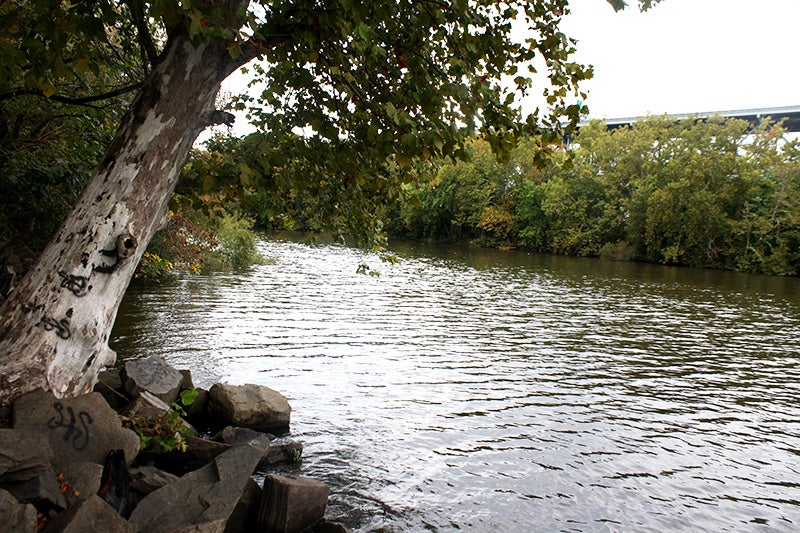Council consensus on 50-foot stream buffer in jeopardy

A few weeks ago, a bill was introduced into City Council which would amend various technical errors in the new zoning code and approve the Water Department’s hydrology map. The map had been updated, and the legislation drafted, after a working group convened by Councilman Bill Green’s office settled on its basic tenets: chiefly, that 50 feet would separate new development from the banks of the waterways identified on the map.
This 50-foot standard had been included in the zoning code passed by City Council last December. During the zoning reform process, it had been negotiated down from an original proposal of 100 feet, to the chagrin of environmental groups and other stakeholders. But although the 50-foot buffer was agreed upon by Council, the hydrology map hadn’t been finalized. In June, furthermore, Councilmen Green and Henon amended the code to require Council’s approval of the map before the buffer took effect.
Hence the working group. Followed by the ordinance.
But a setback of fifty feet no longer appears to be consensual. According to Eva Gladstein, deputy director of the City Planning Commission, some members of City Council are pushing to get the buffer on some waterways reduced to 25 feet. Andrew Sharp, of the environmental group PennFuture, said an aide to Bill Green told him last week that such amendments were in the works as well. Council staffers have confirmed that some Council members are looking to reduce the size of the buffer in some areas. But no one could confirm which Council people were making the push, nor which streams would be affected.
Councilmembers Mark Squilla, Curtis Jones, and Cindy Bass all participated in the working group, and support the 50-foot buffer, according to others in attendance. In fact, Jones originally supported the 100-foot buffer, according to his press secretary.
An aide to Councilman Bobby Henon said he had not taken a position on the issue yet; Councilman Brian O’Neill did not respond to repeated requests for comment.
According to all parties, no amendments have been drafted yet, and they couldn’t be introduced until the legislation gets a hearing at the Rules Committee anyway. That hearing has not yet been scheduled.
But, Andrew Sharp and others wonder, why is this regulation being negotiated again? Council agreed to 50 feet when it passed the code, and Green’s working group, which included District Council members, agreed to 50 feet again this summer.
“From our perspective this is completely settled policy, and now this has been settled twice,” Sharp said.
Gladstein said that, while she hasn’t seen any amendments yet, she couldn’t understand why, after the working group process that produced the current ordinance, there would need to be a change. She said it would be “a shame” to enact different standards for different areas of the city.
Complicating these matters is the stance of Councilman Bill Green, who has tried to downplay his office’s involvement with the stream buffer issue while appearing to drive it at the same time.
When the working group meetings were being organized in August, his staff made the agenda and sent out the invitations, according to several participants. According to Eva Gladstein, Green’s staff approached her about hosting the meetings, which the Planning Commission did in its space in the City of Philadelphia building. Gladstein also said she suggested inviting District Council members to the meeting, which Green’s office decided to do, as well as a wider array of civic and environmental stakeholders, which Green’s office decided not to do.
At the time, Green told PlanPhilly that Gladstein was organizing the meetings, and that his office was simply “participating.” But no one else interviewed for several articles on this issue agreed with that characterization. PlanPhilly also contacted the office of Councilman Bill Greenlee, chair of the Rules Committee, to see whether any amendments were in the works for the legislation, and was referred back to Green’s office.
Said Gladstein, “I don’t think there was any question for anybody who was in the room that they managed and controlled it.”
In an interview with PlanPhilly this past weekend, Green said that the purpose of requiring committee hearings is so that Council can carefully consider—and adjust, if it wants to—all ordinances.
“My point is, the important thing is to get it right,” Green said. “And the fact that fifty feet was in the [code passed in December] is accurate, except that the bill never said it applied to every watercourse. It said it applied to an attached map. Now, people could have been thinking that it was going to apply to [all watercourses] but that was never testified to before the ZCC and never came up in council hearings.”
Green said that he has “an open mind” when it comes to applying a uniform setback on the City’s waterways, or employing other tools such as special exceptions to vary the regulation on different streams.
In the meantime, until a hearing is scheduled with at least 15 days’ notice, and Council votes on whether and how to enact the buffer, many of the City’s waterways have no legal protection.
Contact the reporter at jaredbrey@gmail.com and follow him on Twitter @jaredbrey
WHYY is your source for fact-based, in-depth journalism and information. As a nonprofit organization, we rely on financial support from readers like you. Please give today.



